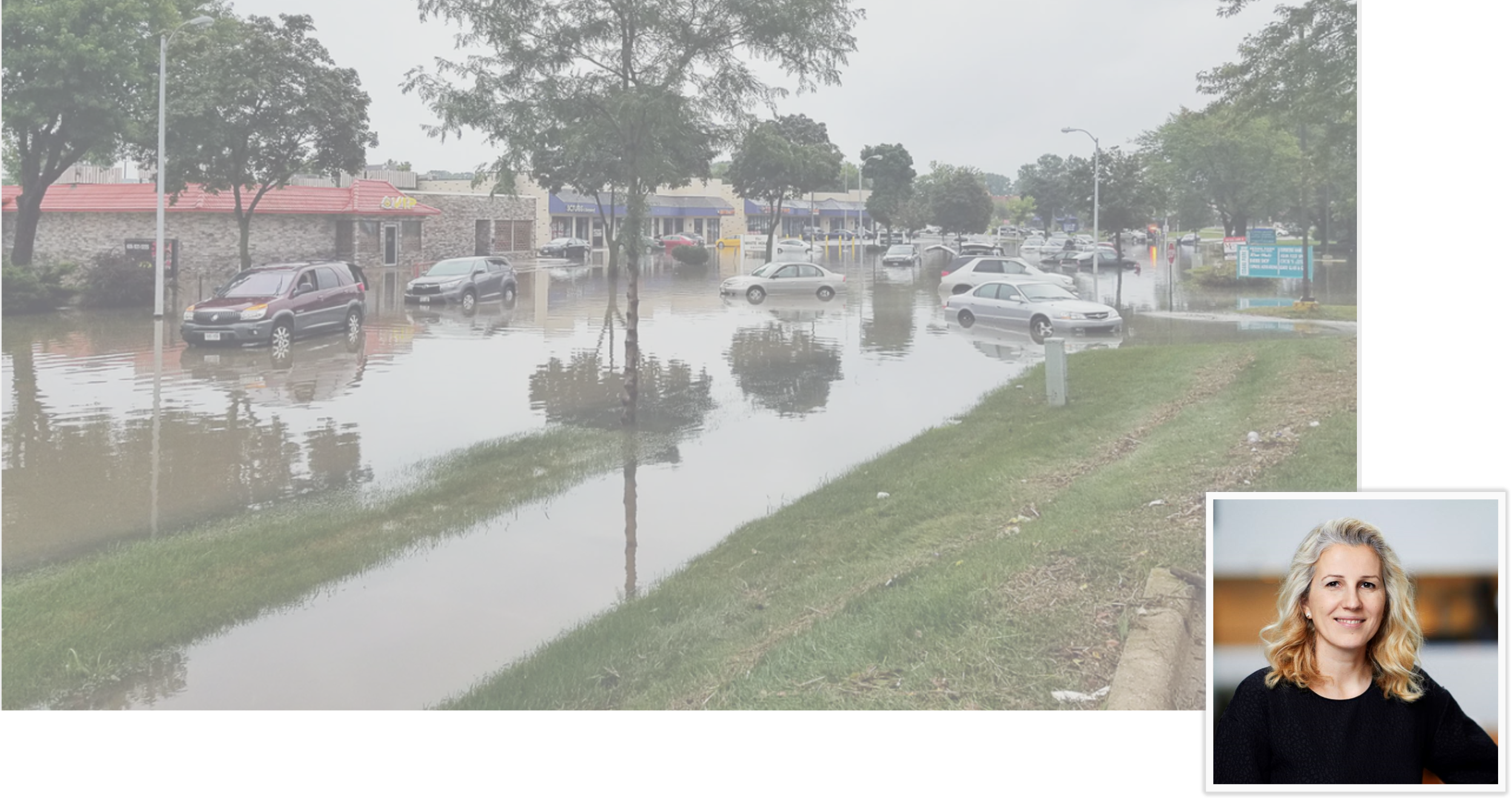In an article published by The Economist just recently, one can read: ‘The ground under the German town of Erftstadt is torn apart like tissue paper by floodwaters; Lytton in British Columbia is burned from the map just a day after setting a freakishly high temperature record; cars float like dead fish through the streets-turned-canals in the Chinese city of Zhengzhou.’
Were you following the news from a safe place?
Climate risk is impacting real economy
Climate changes are making the world a riskier place. Debt is expected to become harder and more expensive to serve. Markets will need credible information on how climate change translates into material risk. How cities respond to the challenges caused by climate changes will translate into occupancy and rents, property operations and investor sentiment. This will then be further reflected in property values and investment performance.
The economic literature describes two principal impacts of climate change on the real economy: changes in productivity and destruction of assets. The commercial real estate (CRE) capital stock can be reduced as a result of damages to the physical capital (infrastructure, buildings and equipment). While such damage can lead to an increase in replacement investment in the short term, at the aggregate economy level, it is likely to lower net wealth (ECB, 2020). Some authors even argue that the combined effect of a sharp fall in physical capital values and a drop in asset prices can be disruptive enough to trigger an economy-wide recession (ESRD, 2021).
The past months have seen some of the worst flooding news in decades. Although we can link many of these events with extreme weather conditions, we must acknowledge that many European (and Nordic in particular) cities sit on or are near water. Data from IPCC (2021) show that some aspects of climate change may be amplified for cities, including heat (since urban areas are usually warmer than their surroundings), flooding from heavy precipitation events and sea level rise in coastal cities.
CRE markets could face potentially large repricing
In a study published in 2021, Danish Meteorological Institute (DMI) has developed flooding scenarios for the Danish coastline, including projections of flooded areas. The study has shown that damages in buildings make up a large share of total flooding costs. A coastal flood mapping for Norway (Breili et al., 2019) argues that, although Norway is generally at low risk from sea level rise due to its steep topography, a considerable amount of infrastructure is at risk along the coastline. National wise, the analysis identified over 100,000 buildings and 510 km of roads at risk of flooding. In Sweden, a report published by the Commission on Climate and Vulnerability (2018) found that the rise in sea level can put more than 200,000 buildings at risk due to flooding and/or landslides.
These projections are highly relevant for the financial sector, as credit institutions are at risk to incur losses if owners who have lost their assets default on their loans. This is especially the case if assets that have depreciated are pledged as collateral for the debt.
Data from the Danmarks Nationalbank (2021) show that Danish credit institutions have real estate exposures of DKK 2.8 trillion. These exposures include loans and guarantees granted against collateral in the underlying properties. Exposures of DKK 41 billion are currently located in areas already at risk of flooding. In the most extreme climate scenario, this amount will increase to DKK 198 billion over the next 50-80 years. While residential real estate accounts for the largest share of real estate along the Danish coastal line, many commercial real estate properties, public assets and factories are also exposed to flooding. In the case of commercial properties, besides direct damage to the property, flooding can induce other financial losses related to the suspension of operations.
In Finland, the Bank of Finland (2021) defines seven significant coastal flood areas in Finland. According to 2019 data, CRE collateral located in areas with a risk of coastal floods in the largest Finnish cities amounted to nearly EUR 22 billion. With a value of EUR 31 million, Helsinki has the highest share of credit institutions’ commercial real estate collateral exposed to coastal flood risks.
The flooding risk will also have strong implications for insurance premiums as a means for asset value protection. Besides, when granting mortgages for exposures at risk of flooding, credit institutions will apply stringent rules for maximum LTV ratios required, limiting thus the risk for credit institutions.
Transition to a green economy
One possible response to climate changes is adaptation. Strong sea defences can be built to hold back the rising sea level; buildings can be designed to withstand more violent storms and keep the heat out (ECB, 2020). The flip side is that costs for climate adaptation are high, and following a natural disaster, assistance to households and companies can cause a large budget deficit. For countries like Denmark and Norway, coastal flood damages alone could rise to 5% or more of national GDP by 2100 (McEvoy, 2021).
The other possible response is mitigation policies that largely are based on changes in technologies, which will both enable economic growth and lead to a decrease of GHG emissions. On a global level, investors recognise this opportunity and are raising climate tech funds at a torrid race. Data from Pitchbook (2021) show that so far in 2021, global investors have already closed as many climate-focused funds as were raised during the previous five years combined.
Conclusion
In coastal cities, the combination of more frequent extreme sea level events (due to sea level rise and storm surge) and extreme rainfall/river flow events will make flooding more probable (IPCC, 2021). How will this translate into Nordic CRE markets?
Going forward, if the risk of flooding is expected to increase in some areas in the future, the value of assets can depreciate even before any flooding has occurred. This implies that, in the future, assets and locations that are considered less affected by climate change or more resilient to it could well benefit from a pricing premium. For investors, the objective will be to understand how climate risks could affect asset liquidity and, as a result, returns in income and capital growth. The challenge is that the analysis of climate risk is very different from what we can see in the analysis of financial market risks since climate risk projections are being made over very long-time horizons with limited empirical guidance from history.
Please contact Dragana if you have questions or would like to book a meeting with her.

